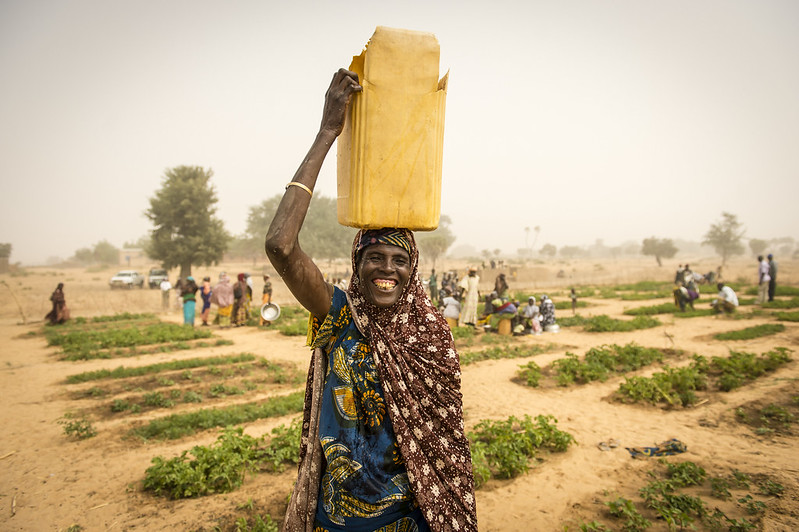10 Facts about Life Expectancy in Niger

Life expectancy rates measure the overall mortality of a country in a given year, a statistic affected by countries’ poverty rates. There is a correlation between poor health and poverty that implies those in better socioeconomic classes will live longer, healthier lives than those in lower classes. With a poverty rate of approximately 44.1 percent in 2017, Niger, a landlocked country in Africa also has one of the lowest life expectancy rates in the world. Below are 10 facts about life expectancy in Niger, which explain the challenges the government faces to improve quality of life and the efforts being taken to prevent premature deaths.
10 Facts about Life Expectancy in Niger
- In 2016, the global life expectancy rate was 72.0 years old and on average, women were expected to live to 74.2 years old while the rate for men was slightly lower at 69.8 years old. A 2018 estimate by the CIA estimates the average life expectancy rate in Niger was 56.3 years old. The rate for women was 57.7 years while men on average lived until 55.0 years old.
- One of the biggest factors affecting Niger’s stagnant poverty rates is their increasingly growing population rate. With a 3.16 percent growth rate, Niger has the seventh fastest-growing population in the world. The people of Niger lack adequate resources to feed and shelter the constantly increasing population only exacerbating the mortality rate.
- In 2017, the UN ranked Niger as the second least developed country in the world due to their reliance on agriculture. The majority of the population, 87 percent, depends on agriculture including subsidized farming and domestic livestock as their primary means of income. Nearly half of the population of Niger falls below the poverty line a consequence of the limited job opportunities and lack of industry.
- In 2017, Niger ranked 189th out of 189 countries on the United Nations Human Development Index (HDI), a scale that ranks countries based on three factors: health, knowledge and quality of life. The health factor is determined by the life expectancy at birth while knowledge is determined by the average rate of schooling for citizens and quality of life is measured by the gross national income. Although this index does not account for poverty levels, socioeconomic inequality or human security, Niger’s low ranking depicts a country struggling with healthcare, education and economic prosperity.
- The top three leading causes of death in Niger in 2017 were malaria, diarrheal diseases and lower respiratory infections. Comparatively, in the United States, the leading causes of death are heart disease, cancer and accidents. The leading causes of death in the United States are noncontagious and in the case of accidentals, unavoidable. However, both malaria and diarrheal diseases are treatable and communicable conditions that could be prevented with proper healthcare.
- Located between three deserts, Niger is one of the hottest countries in the world with a very dry climate. This extreme climate creates inconsistent rainfall patterns, which leads to long periods of drought and widespread famine. Groundwater, the only option for clean water, is often contaminated in wells or kilometers away. As a result, only 56 percent of the population has access to drinking water while 13 percent of the population uses proper sanitation practices.
- The people of Niger lack education about proper health practices with 71 percent of people practicing open defecation while 17 million people do not have a proper toilet. The lack of proper disposal for fecal matter affects access to clean drinking water by contaminating hand-dug wells meant to provide clean water to entire villages. This improper sanitation, contaminated water and insufficient hygiene contribute to diarrhea-associated deaths in Niger.
- In partnership with European Civil Protection and Humanitarian Aid Operations (ECHO), UNICEF Niger successfully advocated for the expansion of the national seasonal malaria chemoprevention campaign and the inclusion of malnutrition screening in the country. In 2016, the malaria chemoprevention campaign helped 2.23 million children between three and 59 months suffering from malaria. Also, the incorporation of malnutrition screening contributed to an 11 percent decrease in the number of children with severe acute malnutrition in 2016.
- Doctors Without Borders has recognized the need for malaria and malnutrition care in Niger, especially during peak drought seasons. In 2018, Doctors Without Borders treated 173,200 patients for malaria, placed 42,300 people into feeding treatment centers and admitted 86,300 people to hospitals for malaria and malnutrition treatment.
- A UNICEF funded branch of the water, sanitation and hygiene (WASH) program is active in Niger and fighting to increase access to clean water and sanitation facilities to combat open defecation and poor hygiene. Currently, UNICEF is modeling a WASH-approach in 14 municipalities within three regions of Niger with the intent of opening new facilities, strengthening water pipe systems and managing water supply networks.
These 10 facts about life expectancy in Niger depict a country attempting to improve the quality of life for its people despite social and environmental challenges. Slowly, with help from humanitarian organizations and nonprofits, the life expectancy in Niger will continue to improve.
– Hayley Jellison
Photo: Flickr
